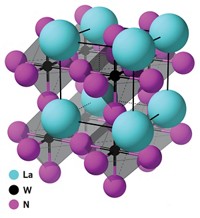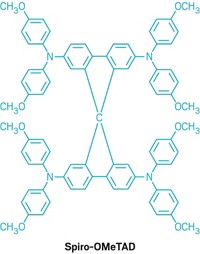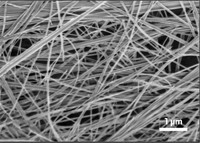Advertisement
Grab your lab coat. Let's get started
Welcome!
Welcome!
Create an account below to get 6 C&EN articles per month, receive newsletters and more - all free.
It seems this is your first time logging in online. Please enter the following information to continue.
As an ACS member you automatically get access to this site. All we need is few more details to create your reading experience.
Not you? Sign in with a different account.
Not you? Sign in with a different account.
ERROR 1
ERROR 1
ERROR 2
ERROR 2
ERROR 2
ERROR 2
ERROR 2
Password and Confirm password must match.
If you have an ACS member number, please enter it here so we can link this account to your membership. (optional)
ERROR 2
ACS values your privacy. By submitting your information, you are gaining access to C&EN and subscribing to our weekly newsletter. We use the information you provide to make your reading experience better, and we will never sell your data to third party members.
Energy Storage
Diamond stabilizes lithium metal electrodes
Thin film of the hard material lets batteries benefit from the metal’s electrochemical advantages while blocking unwanted reactions
by Mitch Jacoby
June 17, 2018
| A version of this story appeared in
Volume 96, Issue 25
Lithium-ion batteries, which power most of today’s portable electronics and many vehicles, rely on electrodes that combine lithium with the oxides of cobalt, nickel, manganese, and other metals. Pure lithium electrodes provide higher charge capacity than mixed metal forms. But lithium metal’s reactivity leads to performance-reducing reactions with common battery electrolytes and poses safety hazards, especially during charging. Aiming to exploit the metal’s advantages while bypassing its problems, Stanford University scientists searched for a thin film to protect the electrode surface. The film had to be electrochemically stable; free from pinholes that allow dendrites to grow and short-circuit the battery, potentially igniting it; flexible enough to stretch and shrink during charging cycles without cracking; and able to allow unimpeded flow of lithium ions to and from the metal electrode. The team, which includes Yayuan Liu, Steven Chu, and Yi Cui, met those requirements by using a low-cost deposition method to grow a two-layer, nanometer-thin diamond film (Joule 2018, DOI: 10.1016/j.joule.2018.05.007). The double-layer design, which effectively blocks pinholes, led to energy-efficient cells that remained stable through more than 400 charge cycles.





Join the conversation
Contact the reporter
Submit a Letter to the Editor for publication
Engage with us on Twitter